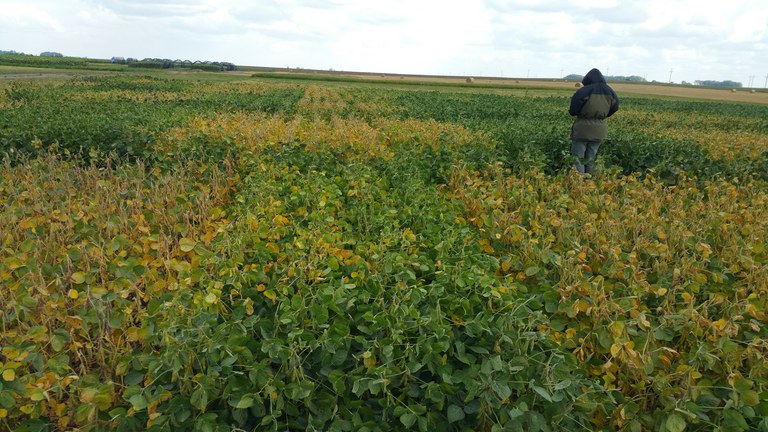Soybean Yield Response to Phosphorus at Three Planting Dates
Objective
To determine whether phosphorus (P) fertilization has an impact on soybean yields at the CREC and if the yield response is affected by planting dates.
Method
Two soybean trials were conducted at the CREC in 2019, one under irrigation and the other under dryland conditions.
The three planting dates were:
- Early (May 11)
- Normal (May 24)
- Late (June 8)
The early planting date signifies a period from late April to mid-May, when less than 25% of soybean farms would have planted in North Dakota (ND).
The P treatments were 0 (also called control), 20 and 40 lbs P, applied and incorporated prior to planting.
The P soil test (Olsen) level under irrigation was medium (9 ppm = 18 lbs P/ac) and dryland was low (7 ppm = 14 lbs P/ac) based on P recommendation for soybean in ND.
Results
- Average yield was 66 bushels under irrigation (about 8 bushels less than average) and 62 bushels on dryland (at least 10 bushels greater than average) for the site.
- Yields were significantly improved by P application and planting dates under dryland. Planting before the end of May (May 11th or 24th) resulted in significantly greater yields than planting in June (Figure 1). Adequate late summer and fall rainfall with low average temperature likely explains why early planting did not produce better yields than normal planting date as we have seen in previous studies.
- Under irrigation, the effect of planting dates interacted with P rates. This means that significant effects of P on yields differed by planting dates. With early planting, 20 lbs of P improved yields by 3 bushels compared to the control, while yields were not different under normal planting date. Meanwhile, at late planting, 40 lbs P lowered yields by at least 3 bushels compared to either 0 or 20 lbs P (Figure 2).
- Compared to results from the previous two years (2017 and 2018), this was the first year that yields improved significantly from P application, and at early planting. This was likely due to better yields in 2019 under dryland and slower mineralization of soil organic P under irrigation, where the soil was relatively wetter and cooler for prolonged periods.
Conclusions
- Under medium to high soil test P levels, P application to soybean at the CREC is not likely to result in frequent improvement in yields, to cover the cost.
- Planting soybean early, between the first week to mid-May, is more likely to result in greater yields than planting later. Yield gained from P application at early planting supported the notion that P fertilization is more likely to impact yields when soils are cool and wet for prolonged periods.

Soybean at three planting dates.
Acknowledgement
This research would not have been possible without funding from the North Dakota Soybean Council.
Jasper M Teboh, Ph. D.
Jasper.Teboh@ndsu.edu
Research Soil Scientist


